Encouraging initial results with golden shiners
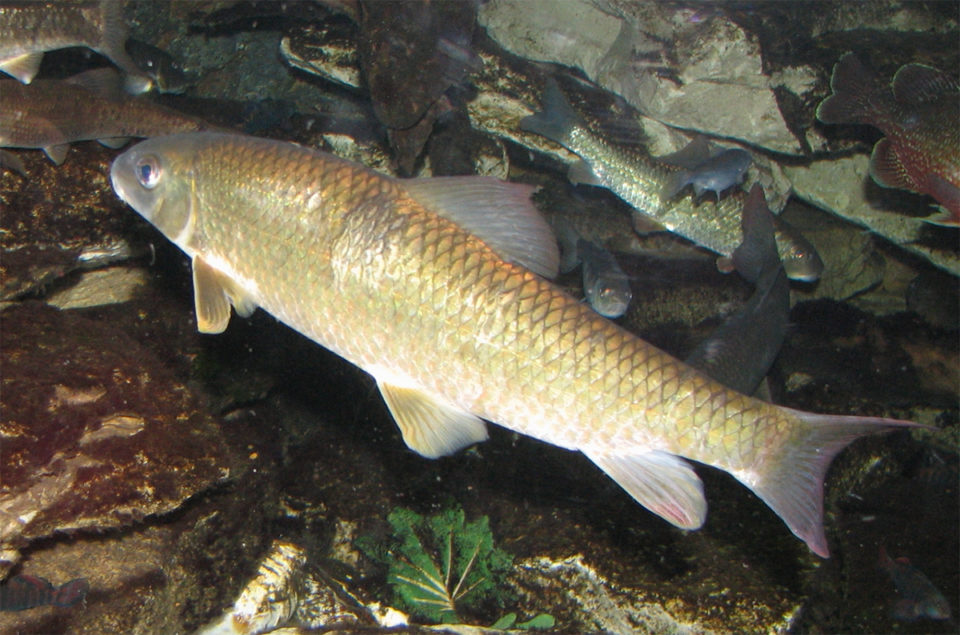
Bird predation and the need for bird dispersion represent a significant cost for fish farming in ponds, and the cost of time and resources spent managing predatory bird activities can reach close to $700 per hectare (ha) by some estimates. Most of this cost is incurred through the manpower spent to keep birds off fish. Some methods to minimize bird predation include running birds, collecting birds with a depredation permit, while others include various scare tactics such as propane cannons or drones. However, birds quickly learn to ignore these scare tactics if there are no consequences. Additionally, in Arkansas and other U.S. states with seasonal weather, erecting bird netting is not always feasible as the combination of ice and wind can quickly damage the nets.
One method to potentially deter predatory birds is a chemical called methyl anthranilate (MA), a food grade and generally recognized as safe (GRAS) food additive that largely contributes to the grape flavor in several, well-known grape-flavored commercial drinks. MA has been used as either a repellent in a fogging spray or added directly onto food to prevent birds from eating livestock feeds, corn, sunflowers, rice and fruits, and on golf courses. Currently, other than research showing that MA can accumulate in the flesh of fish and be eliminated after a relatively short period of time, there is no research on the potential of MA-treated feeds as a deterrent to birds.
Golden shiners (Notemigonus crysoleucas) are members of the Cyprinidae or carp fish family, the sole member of its genus, and native to eastern North America. Commonly used as a bait fish, it is probably the most widely pond-cultured fish in the United States. They are especially prone to heavy bird predation, which is in part attributed to their characteristics that make them a popular baitfish, such as being small and shiny. Nearly 75 percent of total golden shiners sales come from the state of Arkansas, and any method to reduce bird predation would likely help this industry. The aim of our study was to determine whether dietary MA could reduce bird predation on golden shiners over 20 days when cultured in outdoor tanks.
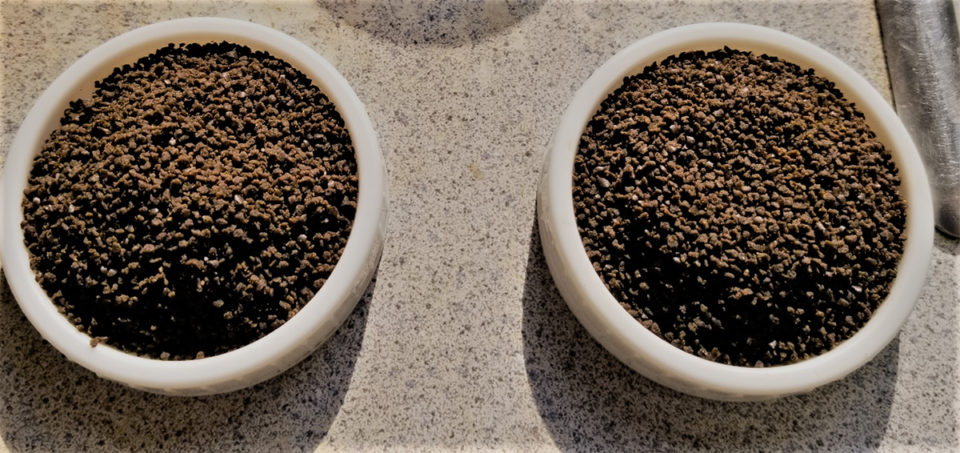
Experimental design
Two diet treatments were used in quadruplicate; one control group of golden shiner juveniles was fed a commercial untreated diet and another group fed the same diet tumbler-coated with 4 ml/Kg (MA/feed) (Fig. 1).
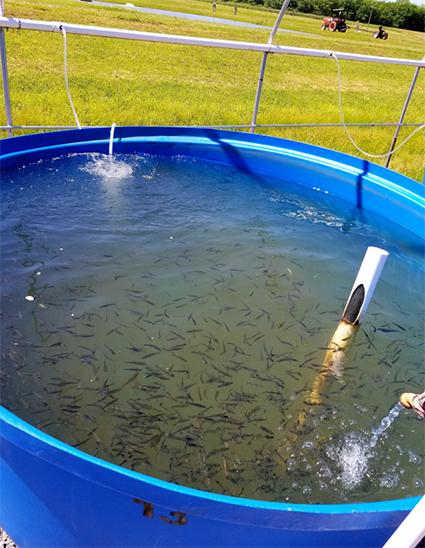
Fish were stocked at 1,600 fish per tank and were maintained in 2,000-liter blue, outdoor tanks with flow-through water (Fig. 2) and fed twice daily to apparent satiation over two weeks. Motion cameras were installed to capture any bird predation activity occurring in the treatment area, which were reviewed daily. Avian access to each tank was the same regardless of treatment, and it was assumed that fish not accounted for in the tanks were removed by birds. Unaccounted for fish were determined by subtracting the total live fish at the end of the study and the counted dead fish over the course of the study from the starting number of fish.
Results and discussion
There were slightly fewer mortalities over the course of the study in untreated tanks, but there were fewer fish unaccounted for (predated) from treated tanks (Fig. 3). Overall, the difference was not enough to make a definitive conclusion. Birds were definitively confirmed to predate on the fish, particularly in untreated tanks, and bird sightings were most common on the untreated tanks (88 percent of photos from motion cameras). In some instances, birds were observed to move between tanks (Fig. 4), suggesting there may be some instances of birds moving fish between tanks in search of more desirable prey.
Within the first day of this study, a photo of a fish crow (Corvus ossifragus) was obtained with several shiners in its mouth (Fig. 5a), and subsequently photos of the American crow (Corvus brachyrhynchos) (Fig. 5b) and the common grackle (Quiscalus quiscula) (Fig. 5c) were taken. The fish crow had the greatest number of appearances on the tanks while the common grackle only appeared once. Despite herons and other birds known to predate on farmed fish being in the area, none approached the tanks. This was possibly due to the tanks being located under a metal frame along with no shallow area for the birds to perch.
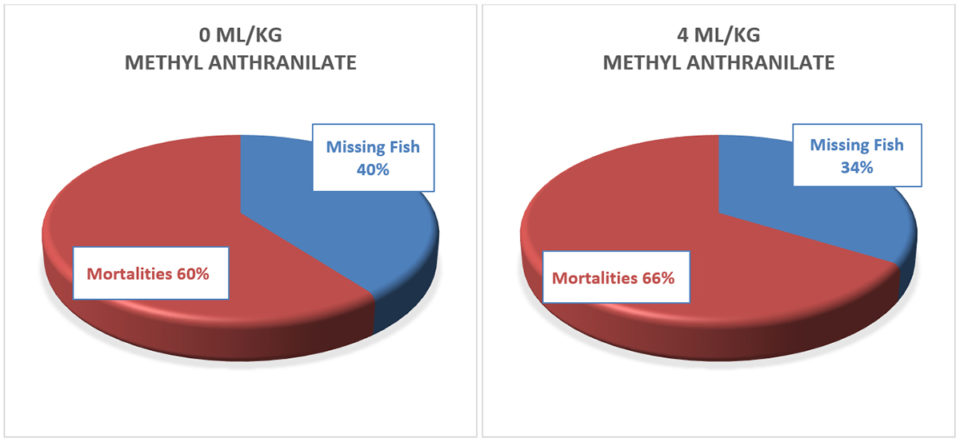
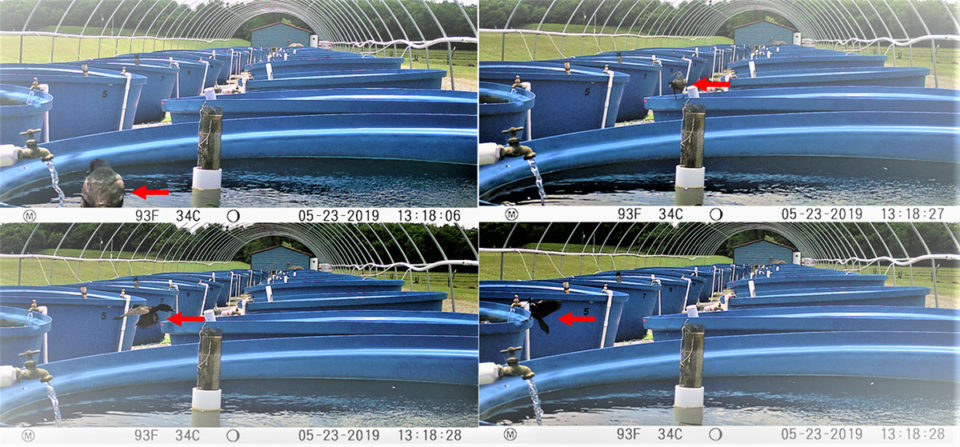
An important consideration when using feed additives is the potential implications to growth and health.
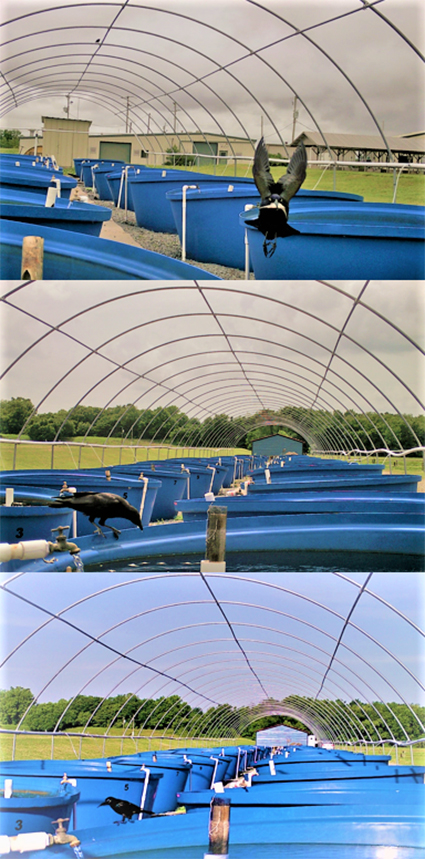
However, at the end of the study, there was no effect on fish growth, while the liver histopathology appeared similar between treatments with no signs of stress or damage (Fig. 6). Thus, within the time period and species tested, dietary MA appeared to have no adverse effects on the fish.
After the study, we placed the frozen treated and untreated fish on trays and left them out near ponds to allow for bird predation. Over the course of two days, no birds attempted to take fish based on observing motion cameras, likely indicating that wild piscivorous birds are less interested in deceased fish than in live fish.

Conclusions
Our findings are only preliminary, but it appears that MA does not negatively impact fish growth in golden shiners and may help reduce bird predation. The lower number of missing fish may indicate that MA has some deterring effect on birds in systems where the fish feed contains it. This may be from MA building up in the fish’s flesh and making the taste undesirable to birds, but this is unclear based on leaving the frozen fish out for bird predation. Due to the proximity of the systems, it is possible that fish were transferred when birds were moving between treatment systems, thus the higher number of dead fish in untreated tanks may be due to birds transporting “undesirable fish” and leaving them in favor of more desirable fish.
However, the use of MA can be recommended as a tool that farmers could use in conjunction with other deterrent methods to manage bird predation in fish culture. Still, additional studies should be conducted, including research on a larger and longer time scale, testing with different species and culture conditions as well as different delivery routes of the MA. In the case of the latter, it may be especially worthwhile to explore the use of MA by spraying/fogging to bypass the need for coating diets and used on an on-demand basis. Such research could substantially improve aquaculture productivity in an environmentally friendly way.
Now that you've finished reading the article ...
… we hope you’ll consider supporting our mission to document the evolution of the global aquaculture industry and share our vast network of contributors’ expansive knowledge every week.
By becoming a Global Seafood Alliance member, you’re ensuring that all of the pre-competitive work we do through member benefits, resources and events can continue. Individual membership costs just $50 a year. GSA individual and corporate members receive complimentary access to a series of GOAL virtual events beginning in April. Join now.
Not a GSA member? Join us.
Authors
-

Nathan Egnew, M.S.
Aquaculture/Fisheries Center
University of Arkansas at Pine Bluff
1200 North University Drive
Pine Bluff, AR 71601 USA -

Nicholas Romano, Ph.D.
Corresponding author
Aquaculture/Fisheries Center
University of Arkansas at Pine Bluff
1200 North University Drive
Pine Bluff, AR 71601 USA -

Amit Kumar Sinha, Ph.D.
Aquaculture/Fisheries Center
University of Arkansas at Pine Bluff
1200 North University Drive
Pine Bluff, AR 71601 USA -

Rebecca Lochmann, Ph.D.
Aquaculture/Fisheries Center
University of Arkansas at Pine Bluff
1200 North University Drive
Pine Bluff, AR 71601 USA
Tagged With
Related Posts

Health & Welfare
Advice for managing predatory birds, part 1
Predatory birds can cause major losses for tilapia farms. As some bird species are protected by law, fish farmers must use non-lethal control techniques.

Health & Welfare
Advice for managing predatory birds, part 2
A look at economic implications of predatory birds on commercial tilapia facilities, and the various control technologies – mostly non-lethal, such as frightening techniques – used by the industry to protect its farmed fish.

Health & Welfare
Biosecurity for shrimp farms
With the global spread of viruses, biosecurity has become an essential element of every shrimp farm. Biosecurity starts with quality of farm design.

Responsibility
In Delaware Bay, a delicate balancing act for shellfish farms
Oyster producers learn to adapt in a Delaware Bay ecosystem that's critical for endangered shorebirds and highly protected horseshoe crabs.

